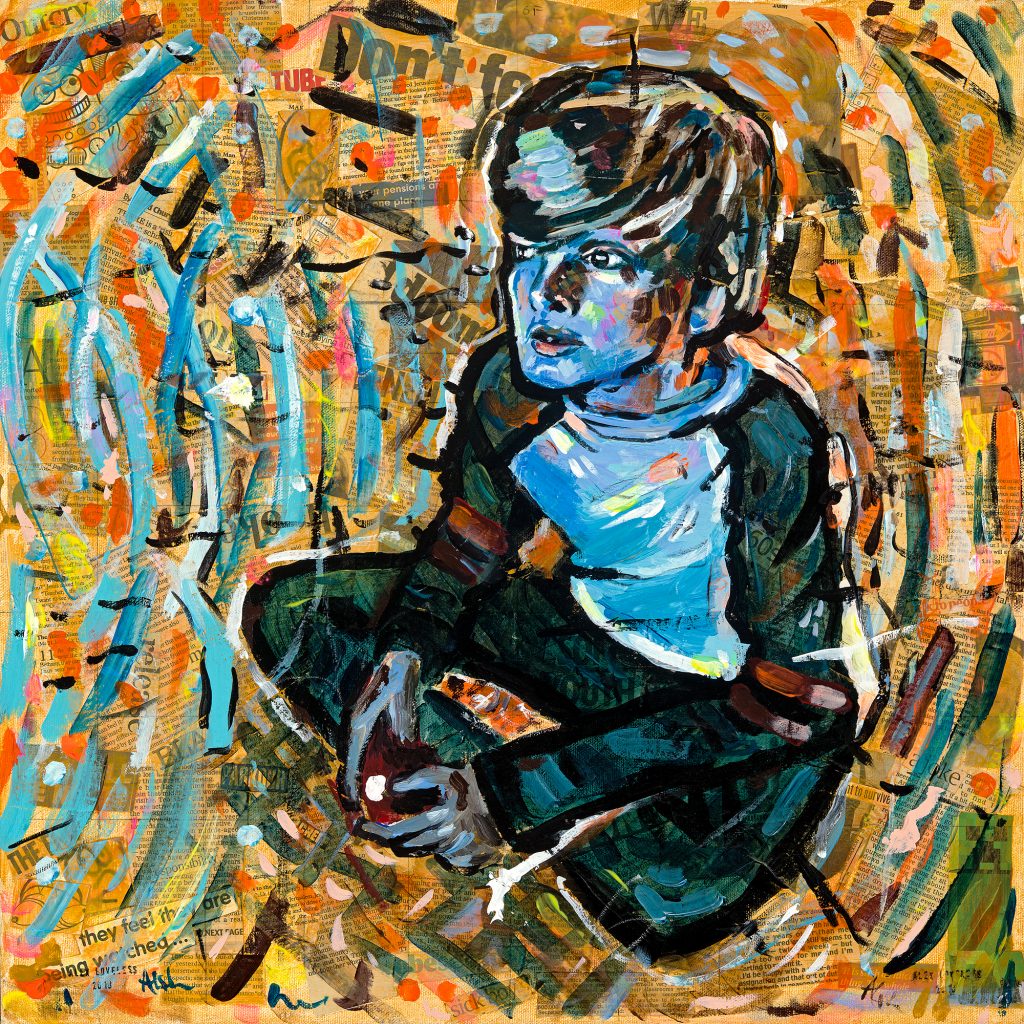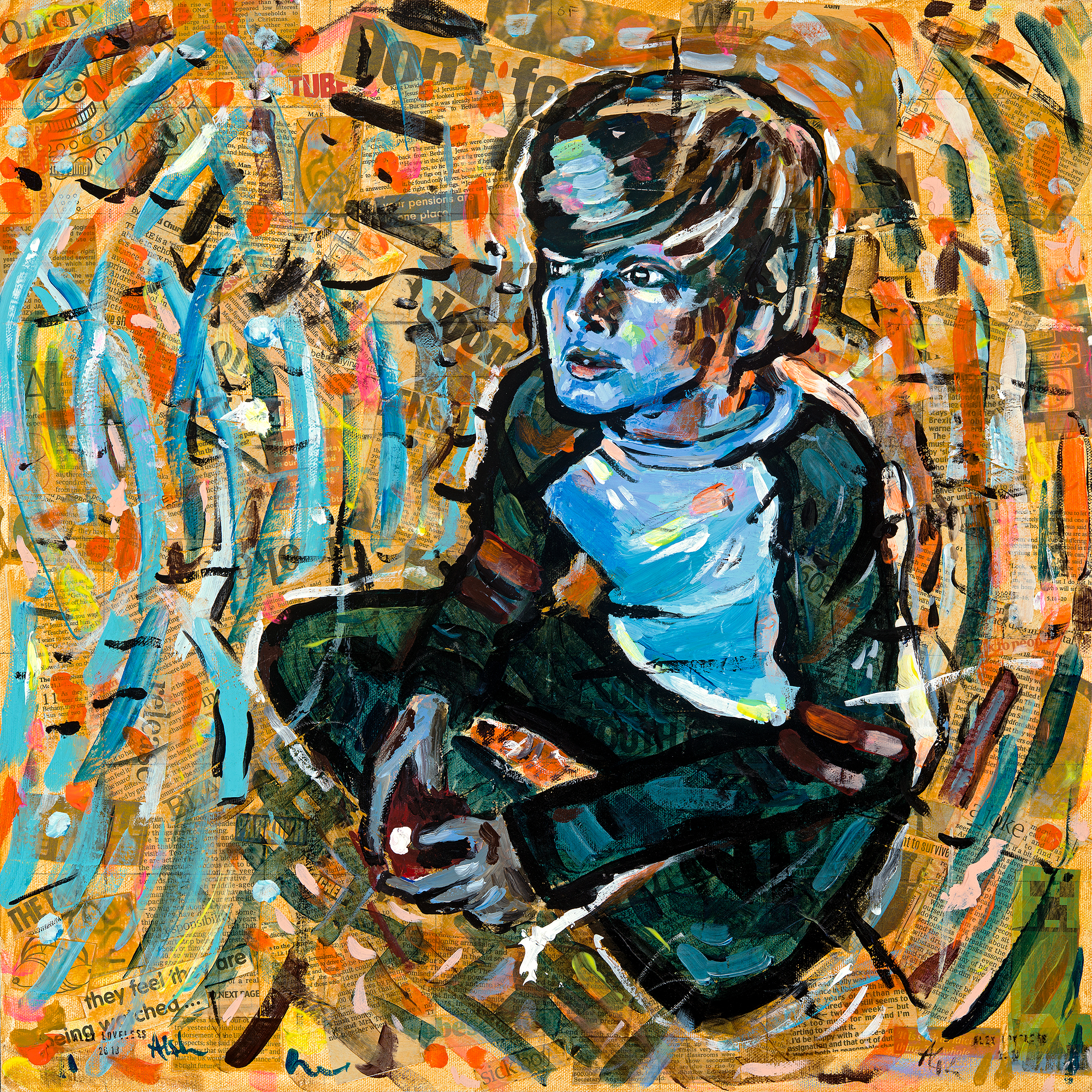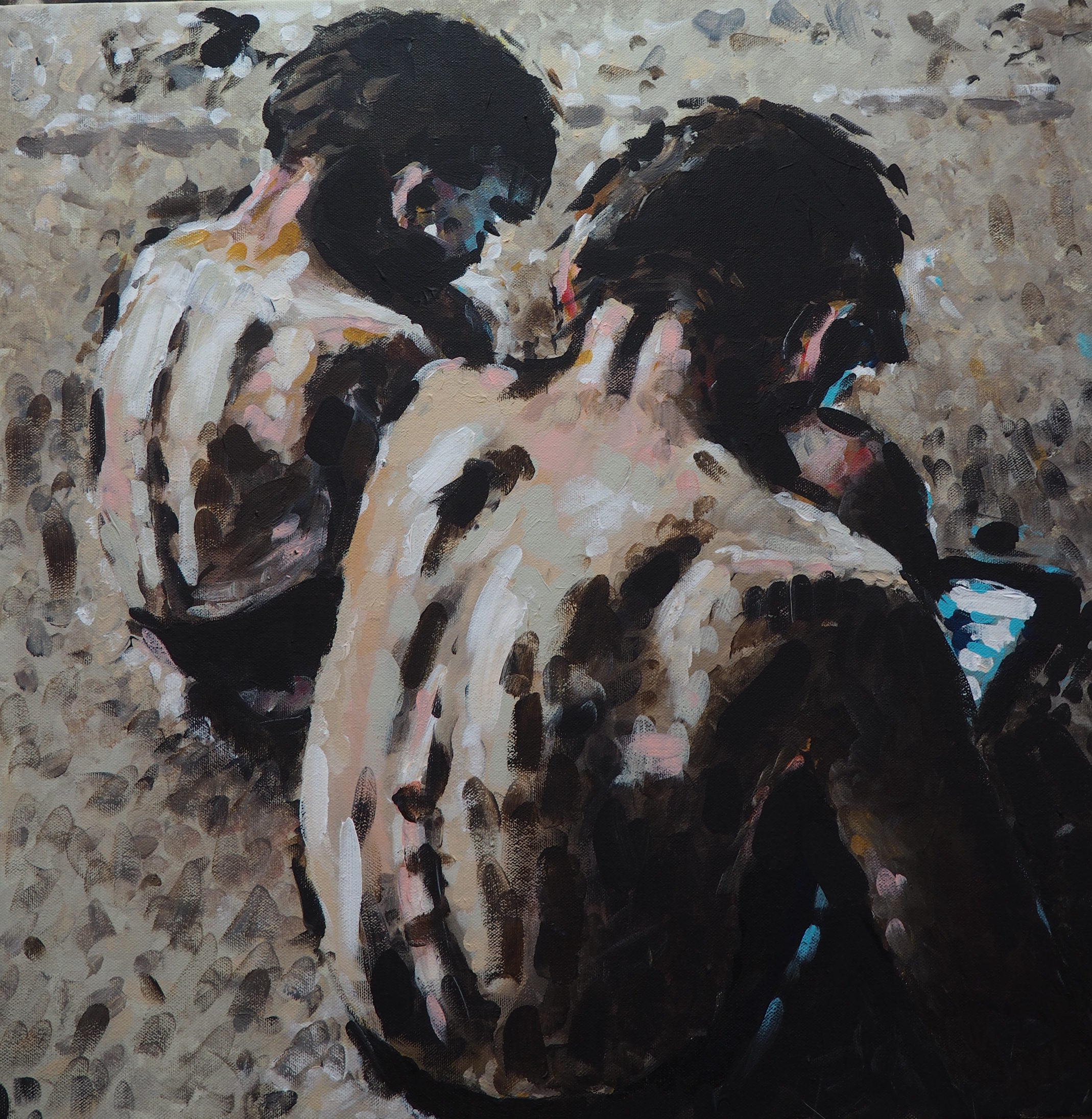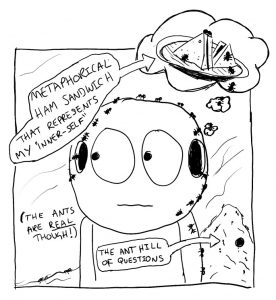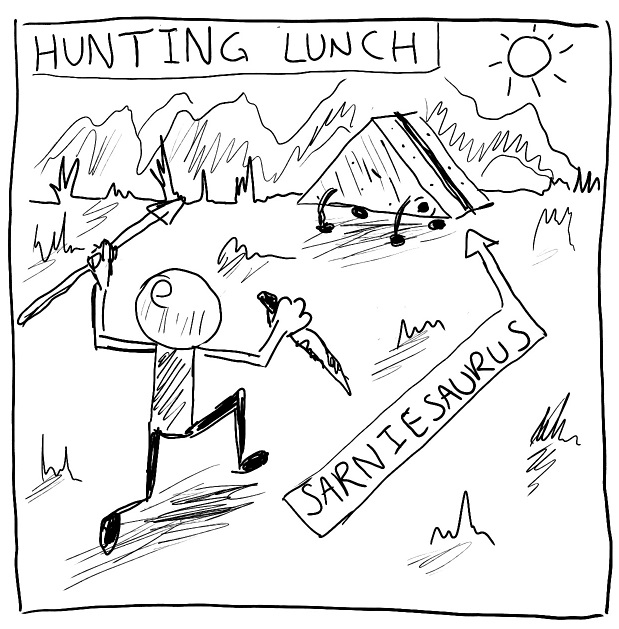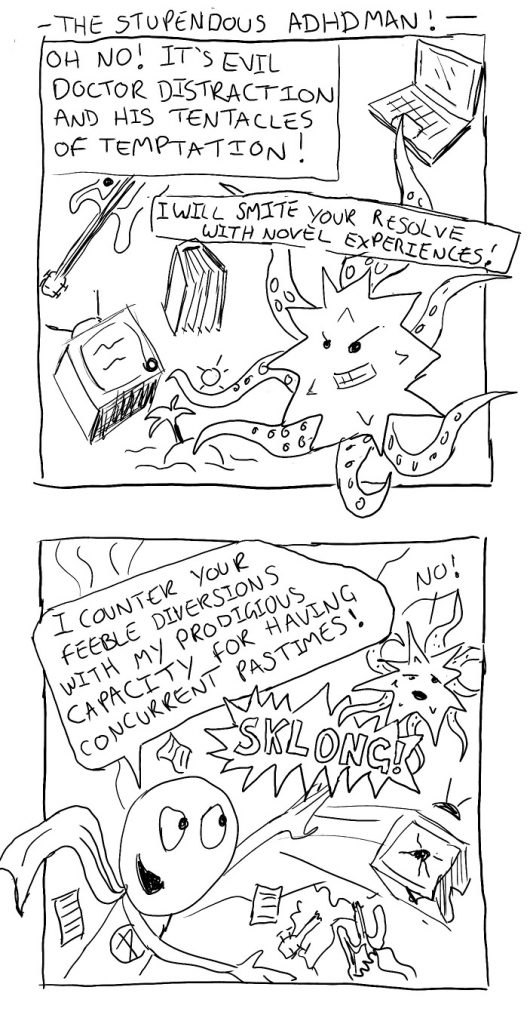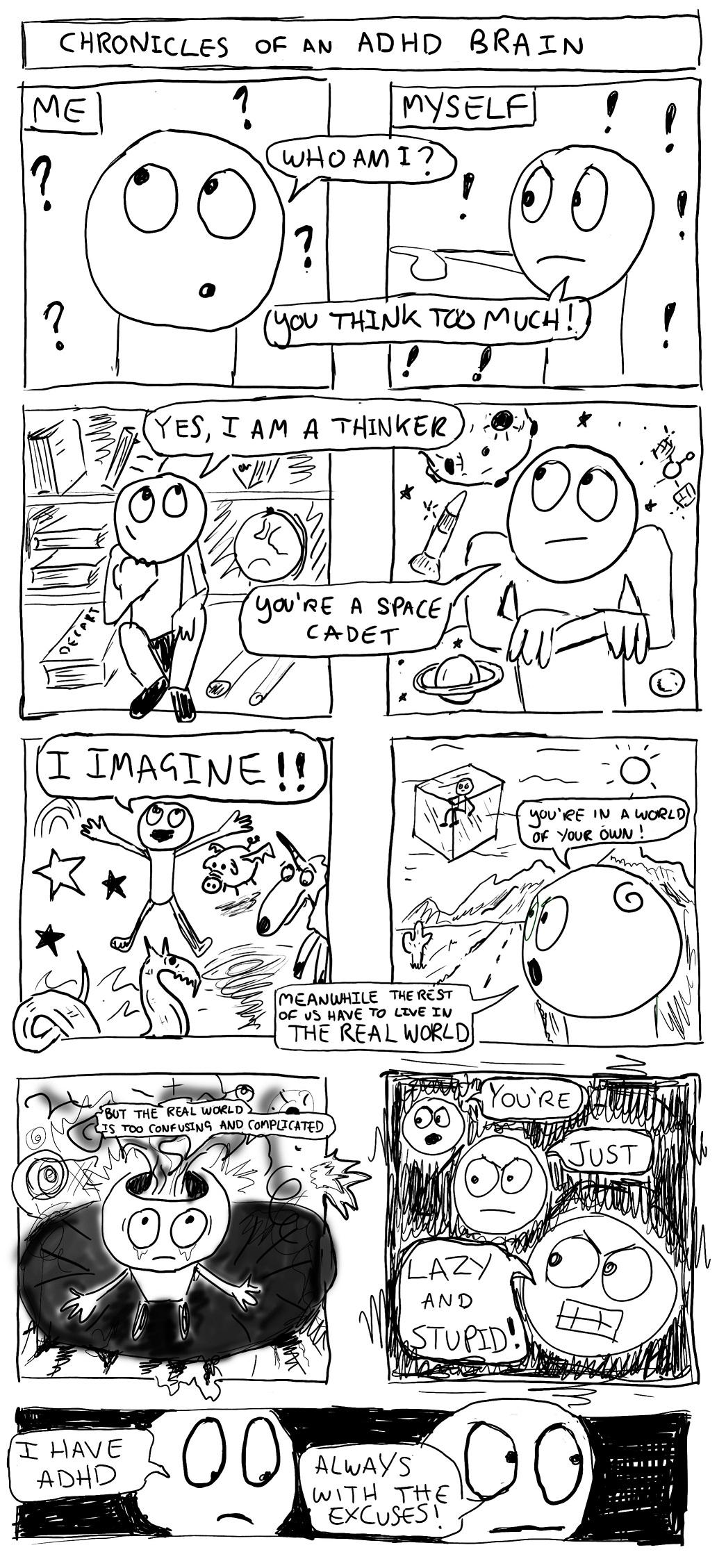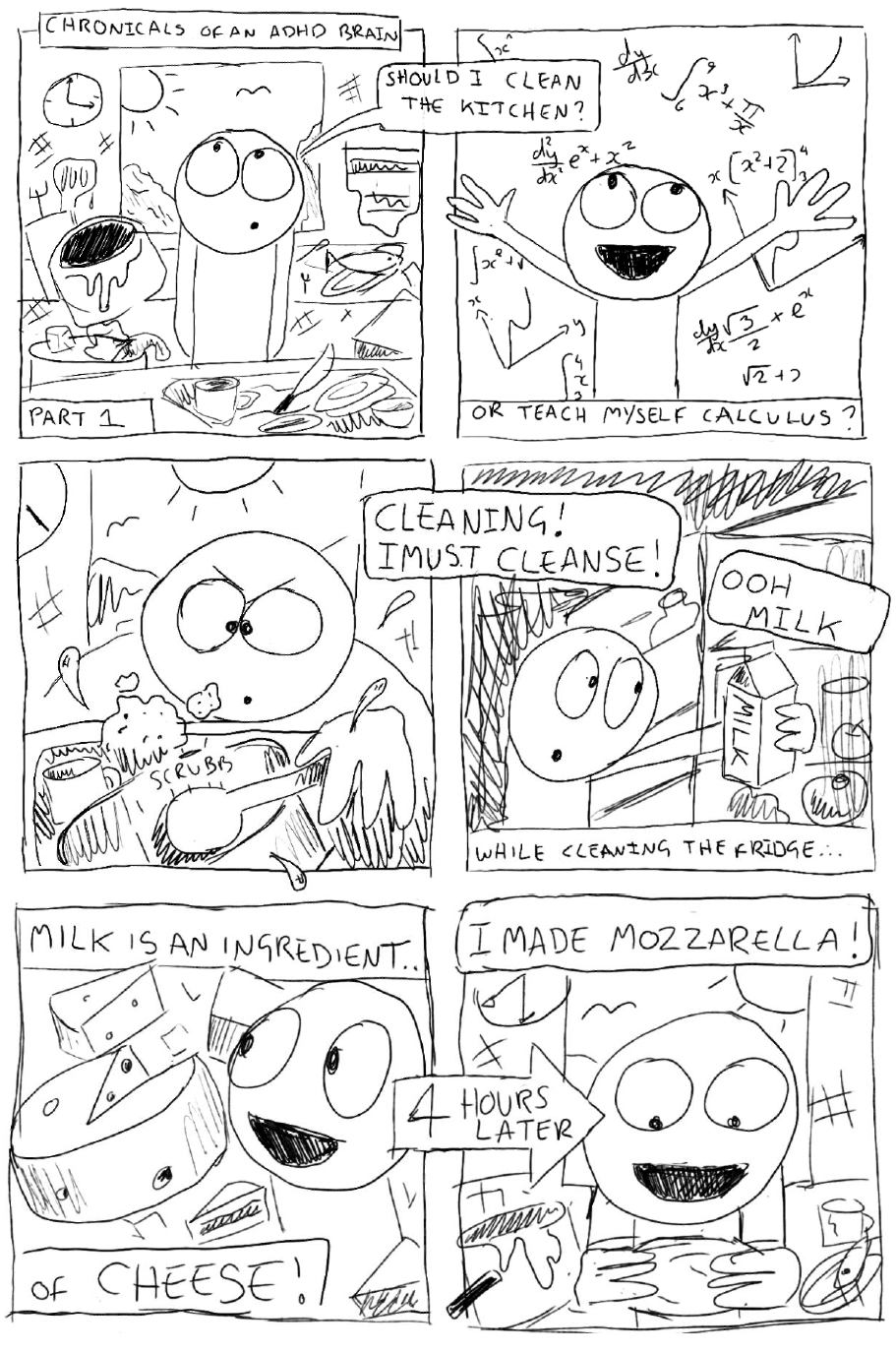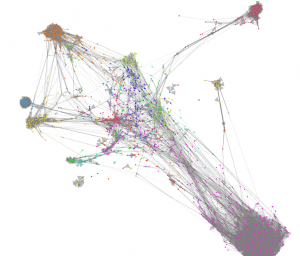I’ve always felt compelled to create things. The idea of creating and presenting a thing, physical or virtual, always felt like some sort of magic – the evocation of something from nothing, the act of transmogrifying and combining one or more things to instantiate something else. I’ve never been particularly picky about my materials, or the mode of delivery. For me, the creation of computer code, utilitarian as it may seem, is every bit an act of creation as conjuring a figure from a block of stone. Code can be elegant, beautiful, surprising, refined, chaotic, expressive, some would even say sensual – all the things that art can (and probably should to varying degrees) be. It is an act of creation and expression, and one person’s code has an individual style and signature as distinct and diverse as Van Gogh and Claude Lorraine. I don’t want to wax lyrical about writing code though. As someone who uses programming as a way to achieve goals – to solve problems, reduce labour, create insight – I sometimes take pride in the character and delivery of my Pythonic creations, but it is the end, not the means that define my work. As an analyst, the end product is something distinct and remote from the the lines of characters that represent the instructions to the computer that created it. The art is in the deft application of technique and conjuring of value (by way of insight, or maybe automation) that the entire process embodies. This is (somewhat) distinct from, say, someone who produces computer games or applications, where the delivery mechanism is much more intrinsically interwoven within embodiment of the final creation. Good code leads directly to good, and continued, experience. A well crafted game is a conversation between the developer and its customers and often embodies an intimate relationship. Like a painting, the art comes from the shared experience, the invisible (and sometimes very visible) link between producer and consumer. But more so, the act of analysis is more akin to that of archeology than the act of creation. The uncovering of form and meaning in the rubble, soil and silt of data. It is about finding something that is there, so that it may be inspected and appraised. In that sense, it does not in itself fulfill my desire to create, even if I do frequently find it very satisfying and rewarding and requiring of my creativity. For this reason, I have various other creative outlets. Writing is one of them. Another is making pictures. I want to talk about this for a bit.
Coming from a largely non-artistic family, art presented itself to me, rather than being something that I actively pursued. Once I discovered the possibility of using marks and media to make real the bingo tumbler of wacky and unsolicited ideas in my head, the balls just kept pinging out onto paper and later canvas and pretty much any other surface that made itself available to me (a large mural of Judge Dredd adorned my childhood bedroom door). The urge to create was less an ambition of expression, than the crude vomit of a confused and chaotic soul. My early influences spoke largely to my adolescent urges and fantastical daydreams and such the athletic, nearly-nude femmes which tangled with mythical beasts hungrily consumed from voluminous outputs of Boris Vallejo and his contemporaries smeared their salacious and heroic mark on my earlier works. The desire to make pictures of things that looked real was manifest. My desire was not to create high art, but make fantasy real. The contextual backdrop that would later be encroached upon by Mondrian or Picasso or the Tate Modern simply did not exist in my stylistic or visual lexicon. I was aware of them, much as dog lovers are aware of cats, but they held little or no contextual, cultural or emotional meaning to me. The Guernica may as well be a teapot in my kitchen (I don’t drink tea) for all the impact it had on me. Perhaps you’re expecting me to comment on how, once exposed to these deified works of artistic wonderment, I learned understand and appreciate their meaning, their beauty, their inherent glory, their genius. This, however, would be an affectation. Picasso does nothing for me. Or almost nothing. Mostly his works make me feel a little irritable, and occasionally I think they are funny. Picasso started out producing works in the more traditional sense, concerning themselves with realism and topography. There is a clear progression to abstraction through his lifetime. He deserves his standing as a pioneer and an innovator. I have no desire proclaim otherwise and little theoretical, professional or academical grounding to facilitate this. His work simply has nothing to do with me, or at least only in a remote, diluted sense. His influence (and that of countless other artist throughout the ages) is, mostly, and at best, tertiary. Their innovations said little to me emotionally or intellectually, but they did open up my consciousness to a world of possibilities outside of the confines of zombies, space ships and scantily clad maidens.
You see, art isn’t created and isn’t presented in a vacuum. More importantly, it isn’t consumed in a vacuum. Another form of high art that usually leaves me cold is classic music (jazz too). I can as a musician (I’m a mediocre guitarist) appreciate some of the the mastery. Having read something of the theory and technique of J.S Bach’s canons and symphonies and fugues, I can comprehend the intellectual and creative wizardry involved. I have even taken time to appreciate some of the more effusive biographical moments some the the historical backdrop – this context, I am lead to believe, will lead me to a greater appreciation of the beauty and magnificence of his work. It’s all totally amazing. What a proper dude the guy was! It is all ejaculatarily cool. What do I hear now, when I listen to Bach’s The Musical Offering, you know, the one with the brain-bending six-voice fugue (it is pretty impressive), the one that is reputedly “the most significant piano composition in history”, the one that he wrote for an actual king and total groupie (Frederick THE GREAT) which he left bits out as riddles so Freddy could fill them in a bit like the Sunday Times cryptic cross word, the one invoked by quasi-loony Douglas Hofstadter as one of the center pieces of his seminal treatise on ARTIFICAL BLOODY INTELLIGENCE, “Godel, Escher, Bach”, you know, that one? What do I feel? Bored. I get much more out of the knowledge I have about the remarkable piece than I do actually listening to it. I feel no shame in this matter. It is just a fact. Really, much like country and western music, Bach’s voluminous output all sounds the same to me. Not that I believe it to be so, but apparently lacking the emotional machinery to comprehend all of that complexity, it just comes out as the audible equivalent of the brown murk you get when you mix too many colours of paint together. So who is it that does like this stuff? Well, Bach may be musically omnipotent, but his most widely recognised works merely provide a backdrop for other stuff to most people (Air on a G String was used to sell consumer quality cigars back when it was still ok to advertise lung poison) and he’s hardly bothering Little Mix at the top of the Spotify rankings. No, most people, just like me, don’t appreciate Bach and Charles Mingus and Garth Brooks, they merely passively consume them when forced to do so. Why is this? Because they lack cultural and contextual backdrop to make this a likely reality. Art, of whatever form, is consumed not in exclusion, but in the midst of, and almost always because of the contextual, emotional, cultural and societal backdrop in which it is consumed. You simply cannot appreciate what it was like to hear The Goldberg Variations when they were first presented to world in 1741 (in fact given that, from a purely probabilistic point of view, you would not likely have been born of the aristocracy you would have lacked the means and opportunity to experience it). You also (presumably) cannot know what is is like to experience these same musical utterances as the daughter of a socially mobile Asian classically trained pianist who desires for his most cherished to not only appreciate their majesty, but also to be able to play these to perfection before your 18th birthday. You can, however, remember hearing the “duh duh duh duh” bit of Beethoven’s 5th for the first time on some shit ITV sketch show in the 80’s accompanied by the smell of your dad’s farts and the subsequent loss of TV signal when your cat knocked the arial from its perch. However, earlier that very same day you and your mates (well, me and my mates) were huddled round a well worn copy of Iron Maiden’s Powerslave operatically hollering the 3rd chorus of Aces High into the unfeeling ether. That was my social context. It’s one that a Bach enthusiast would find every bit as incomprehensible as I their beloved harpsichord noodling. There is no comprehensible framework for comparative value judgment that I have ever encountered – such a thing is but the bastion of science fiction. Yet my passion for Maiden’s 80’s output will certainly rival that of any classical beard stroker. Back to the decorators of canvas? Picasso can basically sod off. Mondrian? Pictorial equivalent of elevator music (I’m pretty sure I’ve heard Bach played in elevators too). I have the intellectual capacity to understand why I am supposed to value these works so highly, I just lack the emotional framework. Movie posters from the 1950’s and 60’s fill me with joy. The original poster for Forbidden Planet may be in my top 5 pictures of any sort, of all time. Francis Bacon and Lucian Freud can sometimes elicit a positive response, but I can get lost in Derek Rigg’s illustration on the (front and back) cover of Iron Maiden’s Somewhere in Time and Ed Repka’s tasteless and unsubtle works from 90’s death metal sleeves are a kind of magic to me, to this day. Can these joyous works be considered art? And regardless of this, do I want to produce items like these? The answer to these questions are very simple: you’d have to ask the creators and no.
Repetition is the death of art. This is the relief to my core philosophy of art and what it is and for. Art, for me at least, is the evocation of something new, from pre-existing states of affairs, which are presented for consumption and appraisal as ends in their own right. A teacup, no matter how beautiful a design, is not art. It is a nice object. A crude kind of art can be created by presenting that teacup, unchanged, as art. Art is an act of selection and contextualisation. In that sense, the single biggest defining attribute of the concept of ‘art’ is mediation. A painting is just an object until presented for appraisal. A painting can be presented as an object, and not be considered art. The whole Magritte “Ceci n’est pas une pipe” is a dry comment on this very fact. No doubt someone has presented a beuatifal painting to the world with a placard saying “this is not art” (I really can’t be bothered to find out). In such a scenario, it’s reasonable to say that the item itself in NOT ART, but the act is. Just like taking a photo. Anti-art is art, just go ask Marcelle Duchamp, but it is art that is utterly dependant on it’s cultural and physical environment. A disused urinal in a disused lot is not art. However, EVERYTHING presented as art is art – and everything presented as art must be considered within a subjective framework and classified as good or bad, worthy or unworthy. Upon which criteria its quality and worthiness are based is up to the consumer, and is frequently heavily influenced by their social and cultural context and that of their background and that of all their peers and contemporaries. The identity, biography, repute and ability of the creator and his/her subjects are window-dressing to the main act of cultural context. Art is a qualitative invocation of the cultural contexts from which it is brought forth. It is a nodule or blemish on the ever growing and changing skin of cultural history. Art is evanescent, capricious, condescending and crapulent. It is also psychic sugar, the phantasmagoria of the collective conscious and unconscious made visible through the utterances of deranged mediums known as artists. The dominance of context upon the very being of art means that it cannot stand still, since the march of societal and cultural progress, in whatever direction, means that standing still is the same as moving backwards. Continually banging out the same old shit, will go down well with a hard core of devotees (AC/DC made a very long career from doing this) but will age poorly in capricious, meandering reality. The cutting edge of contemporary art (by which I mean, cutting edge at the point of its creation) is so shocking precisely because its creator has brought forth something so new that it is in fact totally alien within the the current social context (cue Arthur C. Clarke quote). Every subsequent homage or blatant rip-off hastens the original towards mundanity and it’s creator towards banality. Thus the creator must muster the superhuman power to further push boundaries (and thus render his previous successes puerile and/or irrelevant) or languish in increasing a kind of static creative senility. Thus there must be restless movement at the vanguard of the arts. To fail to do so would colour all art an incipient, temporal beige, like Polaroid pictures that survived from the 70’s. So I repeat myself: Repetition is the death of art.
This brings me back to me, as it always does and should. I have recently rekindled my love for making pictures of stuff, after a break of over a decade. Why I did this you’ll have to ask my ADHD brain. The point is, since I have a desire to make pictures of stuff, I must choose what I want to make pictures of, and to do that, I must have some sense of why I’m doing it. If my intention is to make ‘art’ I must be cognizant of my social context and settle myself that it’s unlikely that I’ll incarnating colour-swatches-at-scale Rothko-style. But still I look to the wider art and illustration community for answers to the what and why questions. But actual the inverse is the case. You see, the core anxiety I have about making pictures is the infinite number of possibilities available for what to represent, how to represent it, what materials to use, the dimensions and other particulars, how and when to present it and to whom, and any number of other considerations which require attention as part of the act of creation. Whatever it has, it has to be new and other new, destinct things must follow, or else violate the whole ‘death of art’ mandate. If an artist only painted a single picture, reproduced from the same photographic image, his entire career, hundreds of times, the combinations and permutations still inherent in this sequence of acts – subtle differences caused by the environment, the effect of the passage of time and rolling window of context, the effects of age on the artist – are mind boggling in their interbreeding promiscuity. The very concept of attempting to bring something new into the world, however unoriginal or repetitive, given all the possibilities is daunting to the point where I am often completely frozen. There is also the question of a creation’s ‘artistic’ merits with regards to the aforementioned considerations, a thorny and contentious and ultimately confusing subject which only the thinnest of surface sheen I’ve managed to allude to. It’s a brain-mangler when I think about it, which suggests I shouldn’t.
The simple answer is to not create at all, an option that doesn’t feel very real to me for reasons that are probably too voluminous and diffuse to tackle at this point. We’re leave that for another rainy Tuesday. Another option is to, as suggested above, do the same thing, or very similar thing over and over. This act in itself is an artistic statement of sorts in itself, at least if presented as such, and one whose meaning and significance would change over time and whose lasting appeal (if any) would be deeply indebted to the that of the artist. What’s interesting about this point of view, is that it, in some senses, is exactly what typifies accepted and celebrated art. Any producer of art (be it writing novels, taking photos, sculpting, creating wonderful food) has to manifest a profound level of consistency to be taken seriously at all. Any artist whose output from one work to the next bore zero commonality with any previous works of the same artist could barely be comprehended by even the most patient of appraisers. Indeed, quite a degree of consistency, some would argue much too high a degree, is required to garner any attention at all, let alone be taken seriously. As someone with an ADHD brain, this very idea, a reality in all meaningful senses, is an infuriating straight jacket of the spirit and soul. The expectation appears to be that once I have overcome the Herculean act of choosing a subject, form and means for my expression, I pretty much have to stick to that framework, or subtle variations and adjacent progressions for ever. OK, so that’s a bit of an exaggeration, but major creative U-Turns are usually reserved for the more established progenitors in any artistic genre, and even then are often seen as folly or ‘sell out’. That is an odd kind of hell. It also runs contrary to my own interpretation of the act of artistic as detailed above. To a pathological degree, I derive little value from repeated experiences, and in many cases unavoidable or imposed repetition is psychologically painful and can lead to acute and extreme degradation of my mental and physical health. This is not a metaphor, this is my reality. It is not an affectation, it is, at its most serrated edge, a profound and chronic sickness. It is also an incredible gift, since it allows, or rather facilitates the broad range of my knowledge and experiences and my ability to ramblingly muse thusly. It’s a bit of a gourdian knot (or some such metaphor). The act of creating pictures of things is joyful and theraputic to me. One of the few truly mindful activities I partake in. But realm of the artistic consumer and, worse, the artistic appraiser, and even worse, the artistic community as a whole, terrifies me. When I make things, I’d like them to be seen so that transcend objecthood into some sort of art, however, the idea of actually doing this is daunting. The whole thing is big and confusing and frustrating. Yet still I make things. I’m going to post some here. I’m not sure that that context says about my works. I’m not clear on the what the context of this blog says about, in terms of how (if) people find it and what they think of me as a result. In that sense it’s a piece of interagive art in itself. Let’s make that official shall we?
The blog is art. It’s also an oak tree. And the image tattooed on the inside of your eyelids. Reading this final sentence will propel you into dimensional vortex where only penguins inhabit. Wish you were here?
